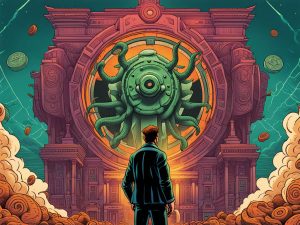What Happened to TON Network?
The Open Network (TON) recently faced a significant disruption, leading to a halt in transactions for over six hours due to an abnormal surge in activity. The disruption began around 10:11 p.m. UTC on August 27, when TON stopped producing new blocks.
Consensus Issue
Initially, Tonk Inu, a crypto community on the network, alerted users about the interruption of services on TON. The disruption was linked to the high traffic volumes caused by the newly launched DOGS meme coin. Justin, a TON Foundation member, confirmed that the interruption was due to an overwhelming load triggered by the DOGS token.
- TON also issued a statement acknowledging the outage caused by excessive load on the blockchain. This led to a breakdown in consensus among validators.
- The team behind the network instructed block verifiers to restart at 4:00 a.m. UTC on August 28 to resolve the issue.
Restoration of Services
After a six-hour downtime, services on TON were finally restored. The platform announced on the morning of August 28 that it was back online and functioning normally. The disruption caused inconvenience to users and highlighted the challenges faced by blockchain networks during high activity.
Impact on DOGS Price
Following the TON downtime, the price of DOGS, which was blamed for the network failure, decreased significantly. After peaking at $0.001856, the coin is now trading at around $0.0012 with a market cap of $645 million. Trading activity has also slowed down, with a decrease in the 24-hour trading volume.
- Observers noted that TON’s issues coincided with the arrest of Telegram co-founder Pavel Durov in France. Durov’s detention is reportedly linked to allegations of insufficient content moderation on the messaging platform.
Conclusion
Network disruptions like the one experienced by TON serve as a reminder of the challenges faced by blockchain projects in maintaining reliable services during periods of high activity. Despite the inconvenience caused by the outage, TON was able to restore its services and resume normal operations after addressing the consensus breakdown.





 By
By

 By
By
 By
By

 By
By